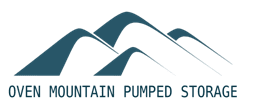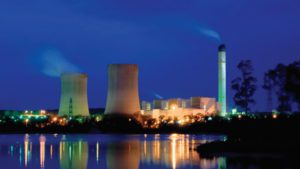A $1 billion, 600MW pumped hydro project is being proposed on private land in northern New South Wales, in yet another example of the extraordinary interest in storage technologies as the share of low-cost renewables increases across Australia.
A company called Oven Mountain Pumped Storage is proposing the facility – which will have round six hours of storage – on the mountain of the same name between Armidale and Kempsey – in the electorate of deputy prime minister Barnaby Joyce.
The idea is to take advantage of two naturally occurring granite basins, separated by more than 600m in height and some 2.5 km in distance, and run a closed-loop, off-river pumped hydro plant that could help balance the output of renewables and meet peak demand requirements.
Oven Mountain was first assessed by engineers and consultants more than two decades ago, but the option of the project has since been taken up by a group of experienced renewable energy developers comprising Anthony Melov, Jeremy Moon and Brian Hall.
It is being looked at again amid the boom in renewable energy projects in the area, as the local transmission network considers a nearby renewable energy hub, and as market operators look increasingly to storage for grid management and security.
“The original business model was to couple it with coal-fired generation, but now it is more of a renewables play,” says Melov.
The news comes as a new report from RepuTex suggests that pumped hydro is likely to displace expensive gas as the technology to provide dispatchable flexibility to the NEM.
“Pumped hydro could serve as a lower cost substitute for gas, while complementing future low-cost renewable energy with greater dispatchable capacity, rather displacing new investment,” it says in the report.
OMPS’s Melov says his facility will look beyond the traditional business case of arbitrage for pumped hydro to a variety of service offerings including traditional derivatives such as “caps” – acting as a form of hedging tool for utilities – as well as least-cost firming products and ancillary services as these markets deepen.

“We believe that the Oven Mountain Pumped Storage project can add value for a wide range of customers including traditional wholesale energy purchasers and renewable energy project owners,” Melov says.
The straight arbitrage model – where a pumped hydro plant would “buy low” and pump water up hill and then “sell high” by generating power by allowing it to run downhill and through the turbines – improves with increasing market volatility, but the project will offer more than that.
“We think this project is pretty well positioned to help fill in the void left by retirement of coal generation, he says. Noting that retirements will not end with Liddell, but this project could be ready around 2022/23.
The region of New England, in Joyce’s electorate, is undergoing something of an investment boom. The White Rocks wind project, and the White Rock solar farm are both near completion, while the Sapphire wind farm is also being built, and its backers have plans for a major solar project and battery storage facility too.
Pumped hydro projects are emerging across the country. Apart from the big-ticket Snowy 2.0 and Tassie 2.0 proposals, there is the Cultana sea-water storage proposal in South Australia, and another proposal by the new owner of the Whyalla steel works to use a decommissioned iron ore mine.
In north Queensland, Genex plans to combine solar and pumped hydro in a former gold mine in Queensland, and there are a myriad of smaller projects, such as the one to re-start the Wilson River pumped hydro unit near the town of Mullumbimby.
A recent ANU study identified more than 22,000 possible sites for pumped hydro across Australia, easily providing enough capacity to take the country to 100 per cent renewables.
“It should not be viewed as an alternative to Snowy Hydro, or to Genex, or other projects,” Melov says. “It will complement and add to what others are doing.”
Discussions are being held with networks, transmission, local planning authorities and the water authorities. The company is about to launch a full feasibility study, in the same way that Snowy 2.0 is now doing.











